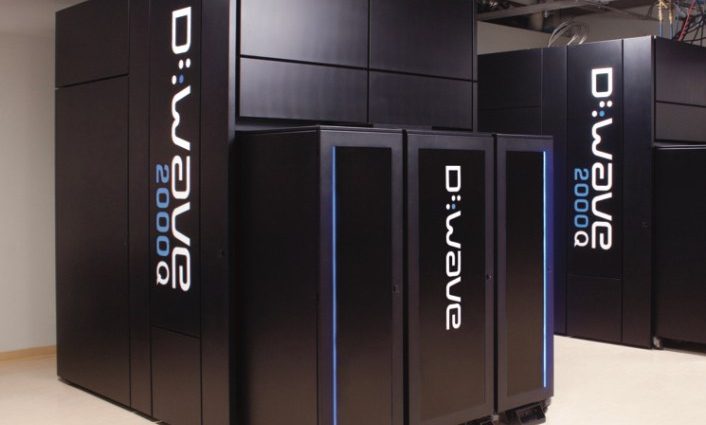Japanese chip maker Rohm is collaborating with venture company Quanmatic to improve electrical die sorting (EDS) in what appears to be the first use of quantum computing to optimize a commercial-scale manufacturing process on semiconductor production lines.
After a year of effort, the two companies have announced that full-scale implementation of the probe test technology can begin in April in Rohm’s factories in Japan and overseas. Testing and validation of the prototype indicate that EDS performance can be improved by several percentage points, improving significantly productivity and profitability.
Headquartered in Kyoto, Rohm produces integrated circuits (ICs), discrete semiconductors and other electronic components. It is one of the world’s leading suppliers of silicon carbide wafers and power management devices used in electric vehicles (EVs) and various industrial applications.
Quanmatic is a Japanese venture company that develops software incorporating algorithms for quantum computing efficiency and precision. Its computational optimization engines leverage quantum technologies for business and industry problem-solving.
EDS is conducted after wafer processing to identify defective chips, which are repaired or removed before cutting the wafer into individual chips and packaging. The process is key to improving and maintaining yields.
EDS is done by putting the wafer in contact with a probe card, an electrical-mechanical interface that can have more than 50,000 tiny needles that send electrical signals through the wafer to determine if the chips work properly and sort out those that do not. Doing this after chips have been packaged would be inefficient and expensive.
With the advance of semiconductor fabrication technology, EDS has become extremely complex, making it increasingly difficult to find a solution that optimizes the manufacturing process.
To address the problem, Rohm and Quanmatic developed an operating system that combines quantum and classical computation with Rohm’s semiconductor manufacturing data and decades of experience.
The two companies note that quantum technology – in particular quantum annealing – has recently been introduced in various fields for combinatorial optimization, with delivery route optimization as one prominent example.
Progress in chip manufacturing technology has seen an exponential increase in the number of possible EDS combinations. Meanwhile, various physical and process constraints make it difficult to find an optimal EDS solution.
In the words of BlueQubit, a quantum software developer based in Los Angeles, “…quantum annealing is an advanced computational method that uses quantum mechanics to solve optimization problems more efficiently than classical computers.
It’s like a superpowered search engine designed to scour an enormous solution space and pinpoint the optimal solution with a level of speed and accuracy that other computing models simply can’t match.
Its ability to handle problems of scale and complexity beyond traditional computing capabilities… paves the way for unprecedented innovations in various industries.”
The term was introduced by Diego de Falco, Nicolo Cesa-Bianchi and B Apolloni of the University of Milan in 1988, but Hidetoshi Nishimori of the Tokyo Institute of Technology and his student Tadashi Kadowaki are given credit for the model of quantum annealing that sparked the quantum computing boom ten years later.
Quantum annealing was first commercialized by the Canadian company D-Wave Systems in 2011. Headquartered in Burnaby, British Columbia, D-Wave provides quantum computing systems, cloud services and software for use in manufacturing, logistics, financial services, life sciences and other industries.

Its customers include Volkswagen, supermarket operator Pattison Food Group, advertising company Interpublic Group, BBVA, Lockheed Martin and, in Japan, Toyota, Denso and NEC. D-Wave has an office in Tokyo.
Professor Nozumu Togawa of Waseda University was also inspired by the work of Nishimori and Kadowaki, and D-Wave’s example.
He and three others – Keio University Associate Professor Shu Tanaka, former Dell Technologies and McKinsey & Company strategist Sumitaka Koga and Waseda engineering graduate Yosuke Mukasa – founded Quanmatic in 2022.
Togawa is chief scientific officer, Tanaka is chief technology officer, Koga is CEO and Mukasa is in charge of products. Togawa calls Quanmatic’s work with Rohm “an example of a highly mathematical optimization calculation method researched at a university being applied in the real world.”
Tetsuo Tateishi, board member and chief technology officer at Rohm says:
As the role of semiconductors becomes increasingly important to achieving a decarbonized society, ensuring stable supply has become a societal issue. The development of an operational system suitable for large-scale mass production lines using quantum technology represents a major step forward for the semiconductor manufacturing industry, enabling real-time optimization of production processes.
Going beyond the current situation, we will accelerate the introduction of quantum technology and related methods into a wide range of processes, with the goal of strengthening our stable supply system by establishing a more holistically optimized supply chain.
That’s an admirable aspiration, but if its application to EDS lives up to expectations, quantum annealing will first make an important contribution to Rohm’s competitiveness and eventually be adopted throughout the semiconductor industry.
Follow this writer on X: @ScottFo83517667

